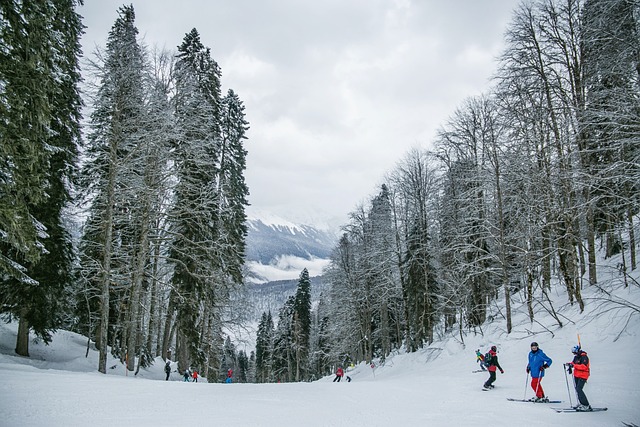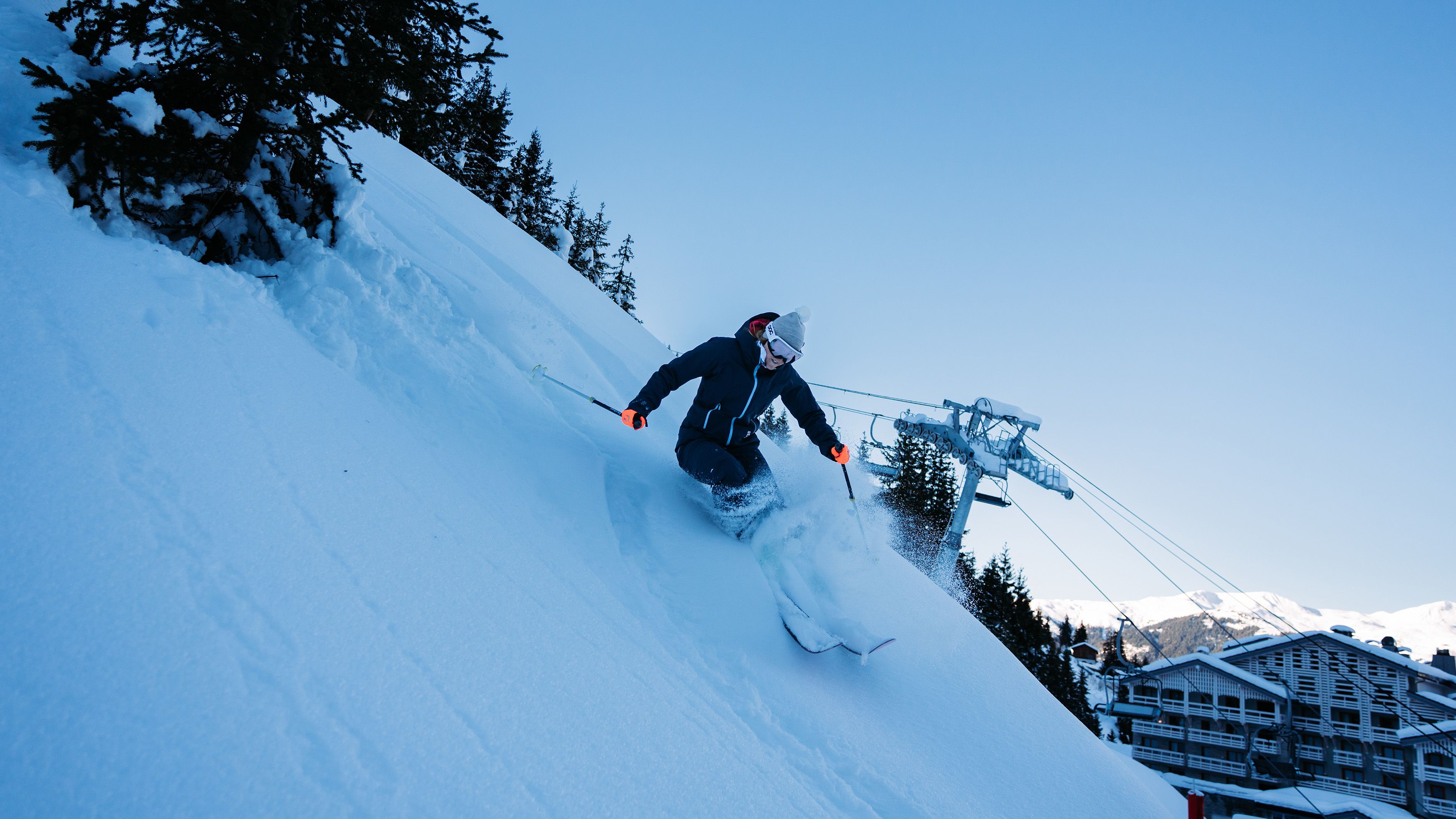
Two types of ski racing are available: giant slalom or downhill. There are two main types of competition. While downhill is the fastest, giant slalom has the longest distance and is the most difficult. Both types of races are difficult and require special equipment. Before you decide to enter a high-speed ski race you should consider all the possible risks.
Being the fastest downhill skier is a remarkable feat. While most downhill courses are shorter than one mile, others are much longer. Downhill skiing is more difficult than traditional skiing. You will need to use heavy compressions and brake hard when you reach the ground. The slopes will also drop more vertically the further you go. It's not for faint of heart, but downhill racing is a rewarding endeavor for the brave.

The sport most people find difficult to master is slalom. In the slalom, there are a number of different courses to choose from, including parallel slalom, which involves two teams competing side by side. The long course typically has four laps.
Downhill is the most dangerous ski race. For example, slalom competitors could lose control of the skis and slide into a ditch. Thankfully, many courses are designed with features that protect riders. This is particularly important when it comes to the super G, which is a fancy term for the most advanced type of downhill skiing.
Downhill is a thrilling and dangerous sport. In addition, it requires special equipment to protect riders from the ravages of centrifugal force. You have many options for staying safe. A good start would be to start with the most challenging genres, such as the super G, and move into slalom and giant slalom after you've gotten the hang of it.
Although the fastest downhill race is not for everyone, there are some tricks you can use to make it happen. Be sure to wear proper attire and ride in a group. You'll need to be able to read your terrain and anticipate changes in elevation, both of which can change in a heartbeat. The best thing is to stay out of trouble while still maintaining a low speed.

The fastest downhill course is Lauberhorn Downhill in Austria. But, it did its work on the ski track in the 1930s. It's now an annual race that is usually held at 37 mph.
FAQ
What is the average time it takes to fly between two countries.
The distance between the airports, as well the weather conditions, can impact the time required to fly.
It takes approximately 3 hours to fly.
However, the flight time depends on many factors such as airline, aircraft types, delays at airports, weather conditions and other factors.
Where can I buy cheap airline tickets?
You might want to look at airlines such as Jetstar, Virgin Australia and Tigerair for the best airfares.
Search online and you'll see that many of these airlines offer cheap flights as a promotional offer.
Which are the best places to stay abroad for a bargain?
For travelers looking for cheap accommodation, there are several options: hostels; hotels; guest houses; and bed & Breakfasts.
Hostels are inexpensive and offer dorm-style rooms where guests share bathrooms and living areas.
Hotels are typically located in tourist areas.
Guesthouses are similar to hostels, except they often have larger rooms and fewer people sharing each room.
These beds and breakfasts are very well-liked by budget-conscious travelers. Guests can stay in their own private homes and have a full breakfast included in their stay.
Statistics
- Between the ages of 11 and 13, kids, or tweens, will likely want some autonomy but also need boundaries. (travelandleisure.com)
- Alcoholic beverages with more than 24% but not more than 70% alcohol are limited in checked bags to 5 liters (1.3 gallons) per passenger and must be in unopened retail packaging. (tsa.gov)
- Pack sweaters, jackets, and underwear in reusable compression bags creating up to 75% more space in your luggage. (wikihow.com)
- According to Maori legends, this park holds 14 fjords that were all carved by a giant stonemason with an adze. (busytourist.com)
- Case in point: the private island of Ilha Caldeira, less than seven miles off the coast as part of the Primeiras and Segundas Archipelago, is located within the marine-protected area with 20 percent of the country's intact living coral. (travelandleisure.com)
External Links
How To
How to plan your next vacation
Planning a trip involves many things like booking flights, hotels, car rentals, activities, etc. It includes important considerations such a budget, destination, weather forecast, time frame, etc.
You should always remember these points while planning your next vacation.
We have prepared a step-by, step guide to help with your next vacation planning. Based on customer feedback and our own experience, this guide was created. We hope this guide helps you to plan your next vacation with minimal hassle.
Steps:
-
Your Budget is an important step in planning your trip. Before you begin planning for your trip, you need to know how much money it is you are willing and able to spend. If you don’t have enough money, it might be necessary to cancel your trip.
-
Book Your Flights - After determining your budget, the first thing you should do is book your tickets. Be sure to get the lowest price flight deal. You should also check to see if any airlines offer special deals during specific seasons. These deals could save you a lot of money.
-
Pick Your Destination. Once you've booked your tickets, the next step is to decide where to travel. Multiple factors play into the decision of where to go, climate (when you can visit), culture (how friendly they are) and cost (how expensive it is).
-
Locate Accommodations – After you've chosen your destination, you need to locate accommodations. You have many accommodation options, from hostels and luxury suites to choose from. Your needs and preferences will determine the type of accommodation that you choose. A hotel is not the best choice if you want to be close to the city centre. A homestay might be a better option if you are looking for quieter places far from the crowds.
-
Select Activities and Attractions - Now is the time for you to choose the attractions and activities that you want to include in your itinerary. You have the option to choose a handful of activities or add more depending on the length and duration of your stay.
-
Determine your schedule - After you've chosen the attractions and activities that you would like to include in your itinerary, it's now time to create it. Sticking to a plan will help you maximize the value of your trip. You can still enjoy your trip if you are able to travel at your own pace.
-
Create itinerary – This allows you to organize all of the details for your trip. You should list all the details, from flights to accommodation to activities to restaurants.
-
Research Online – Before you go on your trip, make sure to research online. Read reviews and testimonials to find out what other travelers think about different destinations. This will allow you to plan your trip accordingly.
-
Take care when packing. Too many clothes is not a good idea. Try to bring just three sets of clothes instead of five. Wear clothing that is appropriate for the climate you are visiting.
-
Be Prepared - Finally, be prepared! Before you leave for your trip, make sure that everything is in order. You don't want to waste time searching for important documents while you're still in transit.